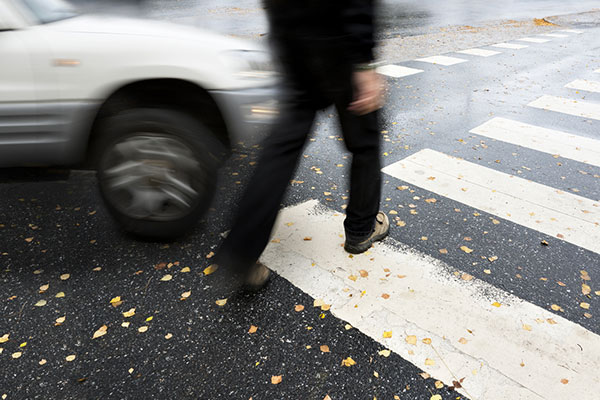Walk This Way: Pedestrian Safety in Denver
Denver is one of the most walkable cities in the country, with very accessible public transportation like light rails and busses. Walkability, or the measurement of how easy it is for residents to walk to grocery stores, restaurants, etc., can have huge effects on health. People who live in walkable neighborhoods typically weigh about eight pounds less and are 2.4 times more likely to walk for 30 minutes or more each day than those who depend on cars.
Apart from the health benefits, walkability provides an affordable option to those who either don’t have cars or don’t want cars—which, between gas, insurance, and regular maintenance, can cost thousands of dollars each year. More and more people are choosing to forego costly vehicles in favor of walking.
Denver’s walkability allows its residents to commute affordably and actively, but what about safety? Just like drivers, pedestrians need look where they’re walking and pay attention to the traffic around them. According to the National Highway Traffic Safety Administration, 73 percent of pedestrian fatalities occur in urban areas.
So what can pedestrians do to protect themselves? Here are some helpful tips for those who prefer walking to driving.
Avoid distractions. Distracted driving can pose a bigger hazard than drunk driving, especially when the driver is texting. As a pedestrian, it’s your responsibility not only to watch out for distracted drivers, but to avoid distractions yourself. If you’re using a crosswalk while focused on your phone (Pokemon Go, anyone?), you won’t be able to hear or even see dangerous drivers. Stay alert and make eye contact with the drivers near you before crossing the street. Just because you see them doesn’t mean they see you.
Avoid walking when it’s dark. If it’s hard for drivers to see you during the day, just imagine how much more difficult it is at night. 70 percent of all pedestrian fatalities occurred between 6 pm and 6 am in 2013. If you work very late or very early, it’s hard to avoid walking when it’s dark—but you can stay safe by carrying a flashlight or wearing reflective clothing.
Use sidewalks and crosswalks. Take advantage of sidewalks and crosswalks as much as possible—after all, that’s what they’re there for. However, sometimes neighborhoods are undergoing construction or simply don’t have sidewalks. In those situations, carefully walk on the shoulder of the road while facing traffic. When you’re walking, try to use designated crosswalks as much as you can instead of jaywalking. Obey traffic rules, just as cars do.
Since 2013, Colorado has managed to lower its number of annual pedestrian fatalities, thanks to improved traffic law enforcement, engineering, and reduced speed limits. But with the help of education, Colorado can continue to improve its safety and walkability. Walking as a method of commuting is good for your health, the environment, and the community, but it’s important to stay safe. If you’re unsure of your responsibilities as a pedestrian, take the time to review safety recommendations, and remember: just like when driving a vehicle, you can never depend on others to maintain your safety.
If you or someone you know has been injured in a pedestrian accident, contact a knowledgeable injury lawyer who can evaluate your case and help get you the compensation you deserve.
Sources:
GHSA. https://www.ghsa.org/sites/default/files/2016-11/spotlight_ped2015.pdf





